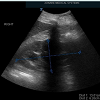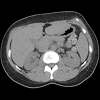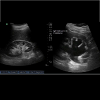Journal of Emergency Medicine & Critical Care
Download PDF
Case Report
*Address for Correspondence: Fadi T. Kasyouhanan, Emergency Medicine Chief Resident PGY- 3, Beaumont Health System, Ohio State University College of Medicine, University of Michigan-Ann Arbor, USA, E-mail: Fadi. Kasyouhanan@gmail.com
Citation: Singh S, Bahl A, Kasyouhanan FT. Rapid Resolution of Hydronephrosis after Spontaneous Passage of Kidney Stone. J Emerg Med Critical Care. 2015;1(2): 2.
Copyright © 2015 Singh S, et al. This is an open access article distributed under the Creative Commons Attribution License, which permits unrestricted use, distribution, and reproduction in any medium, provided the original work is properly cited.
Journal of Emergency Medicine & Critical Care| Volume: 1, Issue: 1
Submission: 13 August, 2015 | ISSN: 2469-4045 |Accepted: 04 September, 2015 | Published: 08 September, 2015
Reviewed & Approved by: Dr. Chad M. Cannon, Research Director, Department of Emergency Medicine, University of Kansas Hospital, Kansas, Missouri, USA
Rapid Resolution of Hydronephrosis after Spontaneous Passage of Kidney Stone
Sukhvir Singh, Amit Bahl and Fadi T. Kasyouhanan*
- Emergency Medicine Chief Resident PGY-3, Beaumont Health System, Ohio State University College of Medicine, University of Michigan-Ann Arbor, USA
*Address for Correspondence: Fadi T. Kasyouhanan, Emergency Medicine Chief Resident PGY- 3, Beaumont Health System, Ohio State University College of Medicine, University of Michigan-Ann Arbor, USA, E-mail: Fadi. Kasyouhanan@gmail.com
Citation: Singh S, Bahl A, Kasyouhanan FT. Rapid Resolution of Hydronephrosis after Spontaneous Passage of Kidney Stone. J Emerg Med Critical Care. 2015;1(2): 2.
Copyright © 2015 Singh S, et al. This is an open access article distributed under the Creative Commons Attribution License, which permits unrestricted use, distribution, and reproduction in any medium, provided the original work is properly cited.
Journal of Emergency Medicine & Critical Care| Volume: 1, Issue: 1
Submission: 13 August, 2015 | ISSN: 2469-4045 |Accepted: 04 September, 2015 | Published: 08 September, 2015
Reviewed & Approved by: Dr. Chad M. Cannon, Research Director, Department of Emergency Medicine, University of Kansas Hospital, Kansas, Missouri, USA




